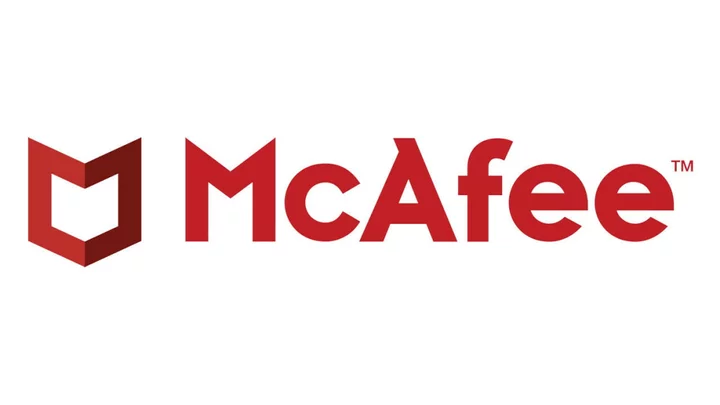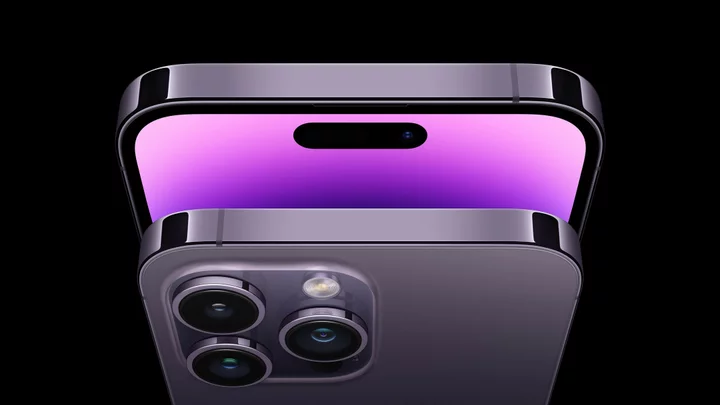The McAfee+ security suite starts with device-level protection for all the devices in your household. At its higher tiers, it provides 24/7 help to recover from the effects of identity theft, with up to two million dollars in insurance to cover your costs. It also works hard to protect your privacy, making identity theft less likely. It’s the most complete solution in the McAfee line, and its combination of unlimited device security with identity protection is quite appealing. Norton’s LifeLock division has been defending against identity theft for even longer, though, and Norton 360 With LifeLock remains our Editors’ Choice for a security suite with identity protection.
Read Me First
Device-level security suite protection in McAfee+ is precisely the same as what you get with McAfee Total Protection. All the additional features in McAfee+ are in the identity protection realm. That being the case, I’ll ask you to read my review of Total Protection before you continue with this review. That leaves me free to focus on the features that distinguish McAfee+.
Very briefly, McAfee Total Protection comes in 1-, 3-, and 5-license subscription packs. It earns perfect scores in lab tests and excellent scores in our own tests, though it totally missed one hand-modified ransomware sample. It has been shedding features that the developers found to be less essential, such as spam filtering and parental control (neither of which PCMag reviews anymore). More recently, it dropped its network protection scanner, vulnerability scanner, and more. Without the lure of unlimited device licenses, it’s not as attractive a choice as it once was.
How Much Does McAfee+ Cost?
McAfee+ has three tiers of service: Premium, Advanced, and Ultimate. At each tier, your subscription gets you as many licenses as needed to protect every device in your household. That includes the expected Windows, macOS, Android, and iOS devices, as well as Chromebooks and ARM-based laptops.
The Premium version of McAfee+ is effectively the same as McAfee Total Protection but with unlimited licenses, while the two higher tiers layer on additional identity features. McAfee+ Premium runs you $149.99 per year, $10 more than a 10-license subscription for ZoneAlarm Extreme Security NextGen or ESET Internet Security. At the Advanced level, you pay $199.99 per year for McAfee+, and the Ultimate edition goes for $279.99.
It's Surprisingly Easy to Be More Secure OnlineThe most similar competitor is Norton 360 With LifeLock, which also comes in three tiers, Select, Advantage, and Ultimate, costing $149.99, $249.99, and $349.99 per year, respectively. However, only the Ultimate edition gives you unlimited Norton licenses. With that edition, you also get unlimited VPN licenses, the highest level of LifeLock protection, and 500GB of hosted storage for your online backups.
With Panda Software’s product line, you can get unlimited licenses at three levels: Advanced, Complete, and Premium. But even though Panda Dome Premium costs $318.99—more than the top-tier McAfee+ Ultimate and nearly as much as Norton’s unlimited tier—it doesn’t offer any identity protection features.
In this review, I cover McAfee+ Ultimate, but I’ll note how features differ at the other McAfee+ tiers.
Can I Protect My Family With McAfee+?
When originally released, McAfee+ covered identity protection for just one individual, with a $20 Family plan option at each level that simply added McAfee Safe Family. In January of 2023, the company enhanced the Family plan to include identity protection for two adults and four children. The Premium level doesn’t include identity protection, as noted, but the Family plan gives each family member basic identity monitoring and licenses for password manager and VPN. The two adult members also get access to Personal Data Cleanup scanning, discussed below.
The Family plan at the Advanced and Ultimate tiers costs a bit more, $269.99 for Advanced and $424.99 for Ultimate. Note that features like credit monitoring, ransomware coverage, and the million-dollar guarantee apply specifically to the two adults. The system only performs basic identity monitoring for children, which may not be sufficient to keep their identity data from being abused.
It’s hard to compare family plans as they’re all so different. With Aura, you can protect five individuals for $444 per year. Norton’s family plan covers two adults and five kids for $389.99 at the Select level, rising to $799.99 at the Ultimate Plus level. IDX Privacy’s plan also covers two adults and five kids but costs $701.88 per year. With almost all services, you get a bump in device protection along with adding protected individuals; McAfee+ is an exception (in a good way) because it offers unlimited devices from the start.
Getting Started With McAfee+
As with other McAfee programs, your first step involves online activation of the registration code you received with your purchase. During this process, you create or sign into your McAfee account online. I recommend opting in for auto-renewal, as doing so activates McAfee’s Virus Protection Pledge. If malware gets past the antivirus, McAfee will mobilize tech support to remote-control your system for manual cleanup. That manual cleanup would cost $89.95 on its own, so this is a good deal. In the unlikely event the cleanup fails, the company refunds your purchase price.
(Credit: McAfee)The main window looks much like that of Total Protection. A banner across the top offers advice to improve your security or reports that everything is fine—once you’ve dealt with all its advice. This is similar to the AutoPilot recommendations you get from Bitdefender Total Security.
Six large button panels below offer quick access to important features: Check Your Protection score: Antivirus, Secure VPN, Tracker Remover, Protect More Devices, and Personal Data Cleanup. A left-rail menu includes an item titled My Protection, which opens a menu of all the features organized into four groups: Protect Your PC, Protect Yourself on the Web, Protect Your Identity, and Protect Your Privacy. A box and arrow icon on some of the menu items indicates that selecting them sends you to the online dashboard for your account.
Personal Data Cleanup
During installation, McAfee+ advised me to set up Personal Data Cleanup. First, a little background. While there are those who try to steal your personal information, there’s also a whole business model that involves finding publicly available data, aggregating it into personal profiles, and then selling those profiles to advertisers and others. Data aggregation is legal, but to stay on the right side of the law, data aggregators must remove your data on request.
The problem is that there are hundreds of these sites, and each can have its own unique opt-out system. And, of course, you don’t necessarily know which of them have profiled you. That’s where Personal Data Cleanup comes in.
(Credit: McAfee)You can configure this feature in the McAfee Protection Center online. To start, you enter your full name, date of birth, and address. The system announces that a scan may take up to two minutes, and that proved to be about right in my testing.
Unfortunately, due to my frequent testing of similar services, I didn’t have any exposed profiles for McAfee to process. If I had, it would have automatically submitted and tracked opt-out requests. Opting out removes your data from a broker’s site, but that doesn’t prevent that broker from reacquiring it, so McAfee runs the scan again every three months.
Note that automated removal is a feature of the Ultimate and Advanced editions. If you’ve selected the Premium edition, McAfee+ still locates and reports on its findings but leaves the opt-out process to you. This information-only scan is also present in McAfee Total Protection’s Digital Security Scan.
The exact number fluctuates, but McAfee tracks around 40 of the most popular data brokers. Some dedicated data broker monitors check many more sites. Top picks Optery and Privacy Bee process data from many hundreds of brokers. Optery offers a free version of its service that, like McAfee+ Premium, reports its findings but leaves opting out as a DIY project.
Looking at other identity protection services, Aura and IDX Complete also work to remove your profile from data brokers. Aura checks around 30 sites, and IDX Complete around 100. Norton’s Privacy Monitor offers a similar service.
Online Account Cleanup
How many online accounts do you have? I’m talking about anything from online banking to Club Penguin. Chances are good that you can’t even list them all and that you haven’t touched some of them in many years. The problem is that a breach at any of those sites could still expose your information. Even if you’re correctly using a password manager now, did you ever go through a phase of using the same password everywhere? If so, that password is probably haunting your ancient accounts.
McAfee’s new Online Account Cleanup addresses this problem, and it’s a winner. It identifies the dozens or (more likely) hundreds of accounts you have just lying around. If you subscribe at the Ultimate level, it automates the process of closing those you no longer need. If not, opting out becomes a DIY project.
To manage this feat, McAfee needs full access to your email account, both to read past messages for account information and to write opt-out emails on your behalf. Also, at least for now, it can only manage its magic if your email account relies on Google or Microsoft. I set it to work on my Gmail account, which I’ve had since Gmail first became available.
(Credit: McAfee)The scan found over 350 accounts, even more than I imagined. It cast special attention on those it deemed risky, rarely used, or financial. I dug into the rarely used category and found it just a bit awkward. By default, it displays 10 items at a time, sorted with the newest first. Those new ones are the least worrisome—it’s no surprise that an account I created last week doesn’t have massive usage. I couldn’t switch the sort order, but I found I could set it to show all the items at once, which allowed me to start at the bottom, the oldest accounts.
For each account you don’t recognize or no longer need, you first click Review to see details. The resulting page lets you know the age of the account and its risk level. It also tags the item with types of data often requested. For example, it tagged one online merchant with Financial, Personal, Email Address, Creditcard, Precise Location, and Gender.
(Credit: McAfee)You can click to keep the account, in which case it won’t appear in the list of pending items. More likely, though, you’ll click to delete it. Doing so brings up an informative and congratulatory popup. Clicking Next from the popup gets you another message, a reminder that you must keep an eye on the My Activity tab going forward, with a “Don’t show this again” checkbox that, in my experience, doesn’t work. Once you click Close, you can go on to the next item for review.
If this process sounds a bit busy, well, it is. On the other hand, you don’t really want to check off dozens of accounts for removal willy-nilly. I’d suggest reviewing 10 or 12 at a time.
For testing, I chose a dozen for deletion and waited overnight. In the morning, five were marked as active, meaning McAfee+ had used my email account to send a removal request. The other seven remained pending. Of the five active items, two received responses, which appeared both in my email Inbox and in the McAfee dashboard. One represented a successful removal, and the other explained a different path to close the account.
(Credit: McAfee)Until seeing McAfee’s implementation of this feature, I hadn’t really thought about the danger of old, abandoned accounts. Getting rid of those you don’t need is a seriously smart idea.
Social Privacy Manager
We all know that sharing too much on social media can get you into trouble, anything from offending friends to helping scammers bamboozle you. But just what are the correct privacy settings? Even if you sort it out, the social media site can make changes. McAfee’s new Social Privacy Manager becomes your social secretary, examining all your accounts, developing recommendations for better privacy, and (with your permission) correcting those settings.
Note that this feature doesn’t appear in the menu of the main McAfee app the way Personal Data Cleanup and Online Account Cleanup do. But in the online console, it joins those two in the Privacy dashboard.
McAfee offers to tighten up your privacy settings for Facebook, Instagram, Google, LinkedIn, Twitter, and YouTube. A similar feature in Trend Micro Internet Security just covers Facebook, LinkedIn, and Twitter. In testing, McAfee’s solution proved more comprehensive.
Social media privacy isn’t a one-size-fits-all affair, so McAfee starts by asking you to pick your user type: Unplugged, Explorer, Connector, or Socializer. The tightest settings appropriate to the Unplugged user would prove too restrictive to the sharing-centric Socializer, and so on.
(Credit: McAfee)The social Privacy Manager needs to reach into your various accounts to capture your existing privacy settings and make any needed changes. It accomplishes that using a browser extension. As you log in to link each account, the extension captures your connection.
I found the scan quite helpful. For example, it found four Facebook settings that matched its recommendations but suggested modifications to another 14. After consideration, I accepted most of its choices and clicked to have it automatically make the changes. I also wiped out a dozen or so settings that allowed LinkedIn to target me with ads.
(Credit: McAfee)As with the similar Trend Micro feature, McAfee advised me to limit my Twitter posts to followers only. But I use Twitter to broadcast each new review—I want everyone to see those posts. I simply ignored that suggestion.
The Social Media Manager is truly useful for perfecting your privacy settings. You should run through the process and give serious thought to following its recommendations. Once you’ve done so, you may want to unlink the accounts and delete the extension—just to tie up loose ends.
Credit Monitoring
Clicking ID Protection in the main menu sends you to the Identity Monitoring page in the Protection Center. I didn’t have any new breaches because I took care of them during my review of McAfee Total Protection. Yes, even if you have multiple McAfee subscriptions, there’s only one you, so the identity features carry over.
(Credit: McAfee)The online Protection Center is laid out much like the local McAfee+ app. On the home page, you see your protection score along with some quick tasks you can perform to raise that score. Clicking My Protection in the left-side menu brings up a submenu that’s divided into Devices, Identity, Privacy, and Web sections. Identity and Privacy each have their own dashboard. I’ve already covered the elements of the Privacy dashboard (Personal Data Cleanup, Online Account Cleanup, and Social Privacy Manager).
On the Identity dashboard, you’ll find panels representing Transaction Monitoring, Credit Monitoring, and Identity Monitoring. Identity Monitoring is something I’ve discussed under Total Protection, so let’s move on to Credit Monitoring.
Clicking Set Up sent me to fill in personal information such as name, date of birth, SSN, and address. I had already filled in some of this data in the Dark Web Monitoring and Personal Data Cleanup components—I guess these parts of the app don’t talk to each other. You finalize the process by entering a confirmation code texted to your phone.
With that step complete, McAfee+ fetches your credit score. Ultimate subscribers get that credit score updated daily, while those at the Advanced level receive a monthly update. Sorry, Premium users—your subscription doesn’t include credit score tracking or other identity services.
(Credit: McAfee)This display isn’t just a number on the page. It also includes a list of positive and negative factors that went into the credit score calculation. For each factor, you can click to learn more details, including ways to mitigate negative factors. Finally, at the bottom of the page, there’s a button to click for your full credit report. That can be overwhelming—you may be happier clicking the adjacent tab for a summary of report data. In addition to displaying credit information, McAfee+ monitors your credit for anomalies and alerts you as necessary. At the Advantage tier, it monitors one credit bureau, while Ultimate users get all three bureaus monitored.
One way to prevent account takeover or other abuse of your credit is to put a lock or freeze on your credit reports. McAfee+ can directly lock your TransUnion report, and it also includes links and instructions for freezing all three bureaus. Credit Lock is an Ultimate feature, while credit freeze is available at both the Advanced and Ultimate tiers.
(Credit: McAfee)You can also put a lock preventing new bank accounts in your name, freeze access to your utility bill history and to the opening of new utility accounts, and freeze accounts managed by other agencies, such as CoreLogic and DataX.
Let's not forget the McAfee Protection Score. It runs from 0 to 1,000, but you can't raise it all the way in McAfee Total Protection, not even if you deal with every data breach and follow all the advice. To really crank up the numbers, you need to make use of the full-scale identity protection found in McAfee+.
Transaction Monitoring
Transaction Monitoring is new since my last review. Like the similar feature in Norton and Bitdefender Ultimate Security, it closely watches your accounts and calls out any anomalies. Of course, you must give it access to any account you want tracked. This feature is powered by McAfee partner Yodlee.
The page for adding financial institutions displays big buttons for Wells Fargo, Chase, Bank of America, and five other big names. If yours isn’t displayed, just start typing its name in the search box. You will need to log into the website for each bank you choose to track.
(Credit: McAfee)The next step is to review or change the limits that will trigger a notification. Out of the box, McAfee alerts you upon detecting a deposit larger than $400 or a purchase larger than $400. If those don’t fit your financial style, change them! It also notifies you of a recurring charge or subscription fee that changes by more than 10%, also subject to change if need be.
Once you’ve set up all your accounts, you can put this feature aside. If it notifies you of an anomaly, you dig in for details and, if necessary, contact the bank or vendor.
(Credit: McAfee)Suspicious transactions appear in a handy list. Even handier, you can remove the filter to show all transactions in this list. If you use more than one credit card and don’t always remember which you used for what, this combined list can provide a handy cross-account search option.
Identity Restoration
If identity thieves get access to your personal information, the various monitoring features should let you know about the attack quickly. Even so, the thieves may do some damage to your credit and identity. In that case, McAfee’s Licensed Restoration Experts can help. Identity restoration is available at the Advanced and Ultimate levels.
When your identity problems stem from a lost wallet, the restoration experts handle canceling and replacing the IDs and credit/debit cards for you and arranging for replacements. Bitdefender Ultimate, among others, has you record the various cards found in your wallet during setup to make the recovery process easier. With McAfee, as with Aura and IDShield, the restoration experts jump in to help without requiring that you have previously recorded your wallet contents.
(Credit: McAfee)You can’t see it, but McAfee backs the restoration process with a guarantee to spend up to a million dollars on the restoration and on reimbursing any stolen funds—two million for Ultimate subscribers. That million-dollar guarantee is standard in this field, though some offer even more. For example, Bitdefender’s Ultimate Plus level also raises the guarantee to two million and adds $25,000 specifically for ransomware losses. McAfee+ offers the same $25,000 ransomware addendum at the Ultimate level. Norton’s top level of LifeLock protection backs the restoration process with a total of three million dollars.
If you dig into the actual insurance policy, you’ll find that there are some limits on specific expenditures. For example, McAfee allocates no more than $1,000 each for initial legal consultation, travel expenses, child care, and CPA costs. You can be reimbursed for lost wages, but only up to $1,500 per week and for no more than eight weeks. These sub-limits are common, though Norton doesn’t use them.
McAfee's Best
With security protection for all your devices and perfect lab scored under Windows, McAfee+ is the company's top security suite. At its Advanced and Premium tiers, it offers full identity monitoring and identity theft remediation rivaling that of competing suites. The new search for abandoned accounts is particularly clever. Even so, Norton 360 With LifeLock remains our Editors’ Choice for identity theft protection with local device security. Its top tier costs more than McAfee’s, but you get unlimited cross-platform device protection and OG identity theft remediation. If you're looking for a top security mega-suite without worrying about identity theft, Bitdefender Total Security is our Editors' Choice, with perfect lab scores and a wealth of security features for Windows, plus protection for macOS, Android, and iOS devices.









